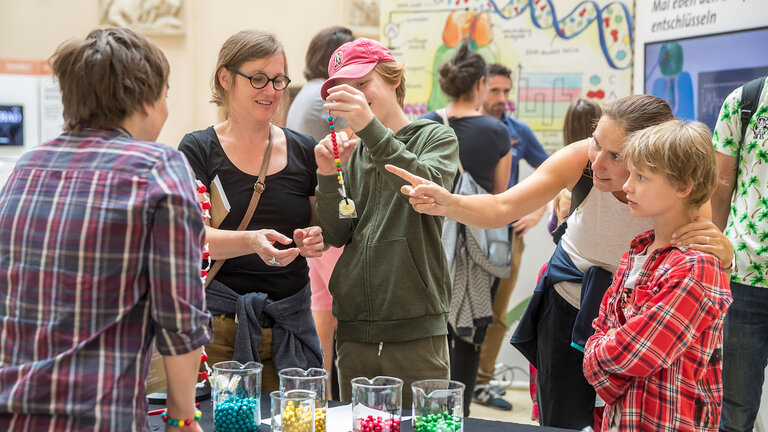Scientifica
What Holds the World Together
20,000 to 30,000 visitors experienced science up close this weekend at Scientifica, Switzerland’s largest science festival.
When autonomous drones, space explorers and a nature-loving techno DJ all converge on Zurich, it can mean only one thing: time for Switzerland’s largest science festival. Focused on the theme of What Holds the World Together, the eighth edition of Scientifica once again drew in tens of thousands of visitors at the weekend.
In the week leading up to the festival, a series of events co-organized with the city of Zurich also proved popular. Over 1,000 members of the public took part in various talks, tours and presentations across 20 different sites in Zurich, getting a behind-the-scenes look at what holds the city together.
On Saturday and Sunday, visitors of all ages flocked to the three campuses of UZH and ETH. Around 20,000 to 30,000 visitors experienced research up close in the universities’ two main buildings and on the Hönggerberg and Irchel campuses. At 70 exhibition stands, researchers from both universities and the public talked science and took part in panel discussions and guided lab tours. The wealth of topics covered at Scientifica included language development, planet formation, natural wonders as well as the future of medicine.
Scientist for a day
“Opening our labs to the public and presenting the great diversity of our research across a wide range of disciplines is a key component of the university’s identity. The ivory tower has long since turned into lively meeting place, as we once again saw this year,” said Elisabeth Stark, Vice President Research at UZH.
Numerous workshops gave visitors a chance to experience research first hand and give their brain cells a work out, dive into the magic of antiquity or design synthetic cells on the computer, to name just a few examples. The workshops aimed at young people and children were particularly popular, allowing them to explore biodiversity issues, program computers or learn how to handle stress. Guided tours to a dark matter detector and many other research facilities that are normally off limits to the public offered intriguing insights into the scientists’ work.
